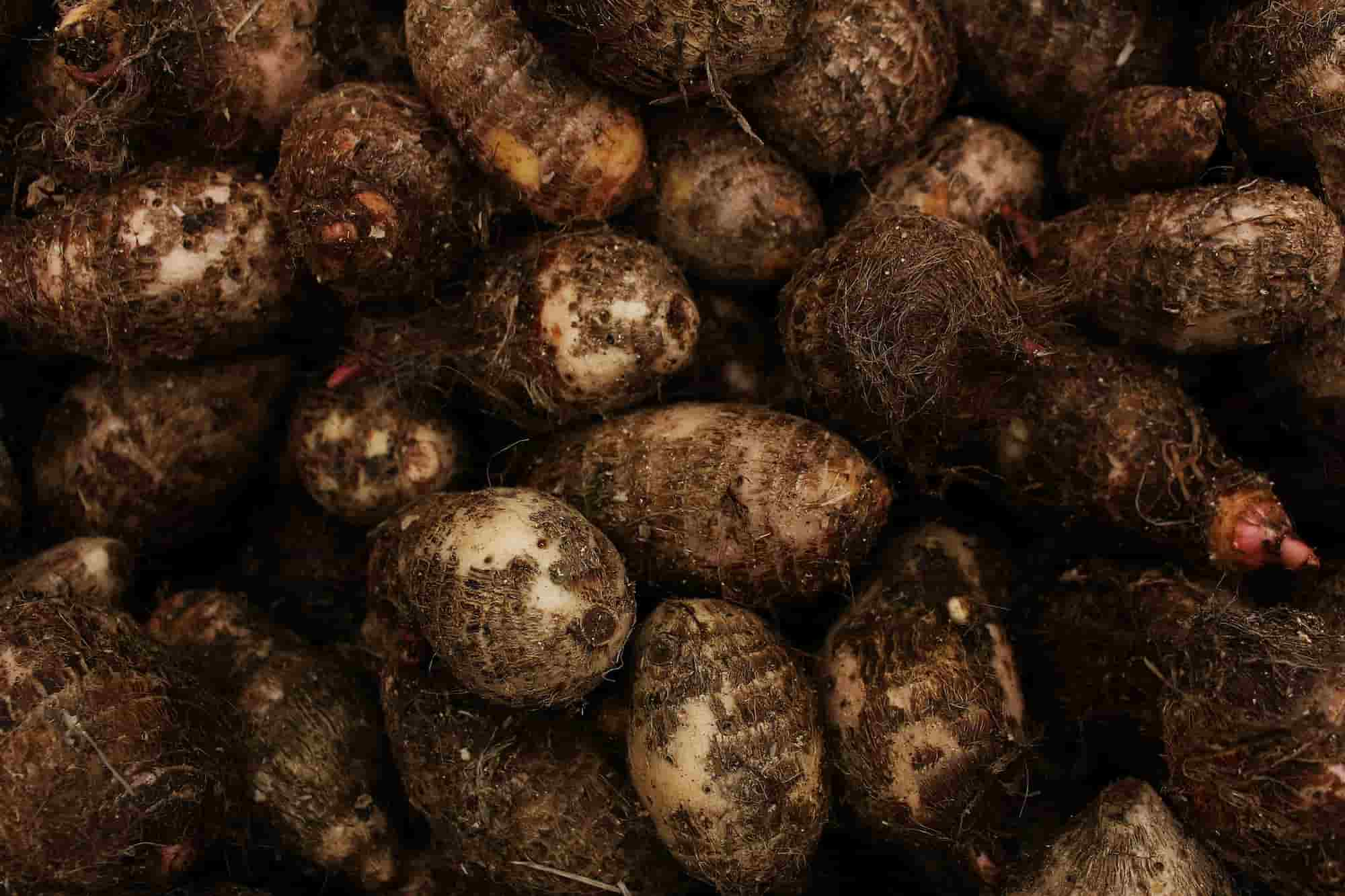
10 unusual and curious vegetables
Discover our unusual, rare vegetables that are surprisingly easy to grow in the garden.
Contents
Tomatoes, beans, lettuces and other radishes hold no secrets for you? Want to bring a touch of originality to your vegetable patch and plate? What if you started to plant and to grow these little-known vegetables found in no other garden? Surprising in shape or colour, different in flavour, atypical in their harvest, these unusual vegetables should pique curiosity among fellow gardeners and awaken papillae of enthusiasts for new flavours. Discover our selection of 10 curious and rare vegetables to grow in your vegetable patch.
Peruvian oca or sour truffle
The Peruvian oca (Oxalis tuberosa) is a small swollen tubercle in family Oxalidaceae that hardly conceals its origins. It grows naturally on Andean high plateaux and was brought to France in 19th century. With little success. Yet it has many qualities to appeal to gardeners: pretty red tubercles the size of pigeon eggs, flavour reminiscent of potato with sorrel’s acidity, clover-like leaves tasting of sorrel, and slightly mealy flesh ideal for mashing, frying or sautéing.
Ground pear or Yacon
Another unusual vegetable producing tubercules with creamy-white flesh belonging to the Asteraceae family. It is a pear in name only, as the yacon (Smallanthus sonchifolius) native to South America is mainly eaten raw in a salad or cooked in a stew, much like a potato. It can also be served as dessert with chocolate. Ideal for providing shade to the vegetable garden due to its size, reaching 2 metres high and wide, the earth pear is tender and frost-sensitive.
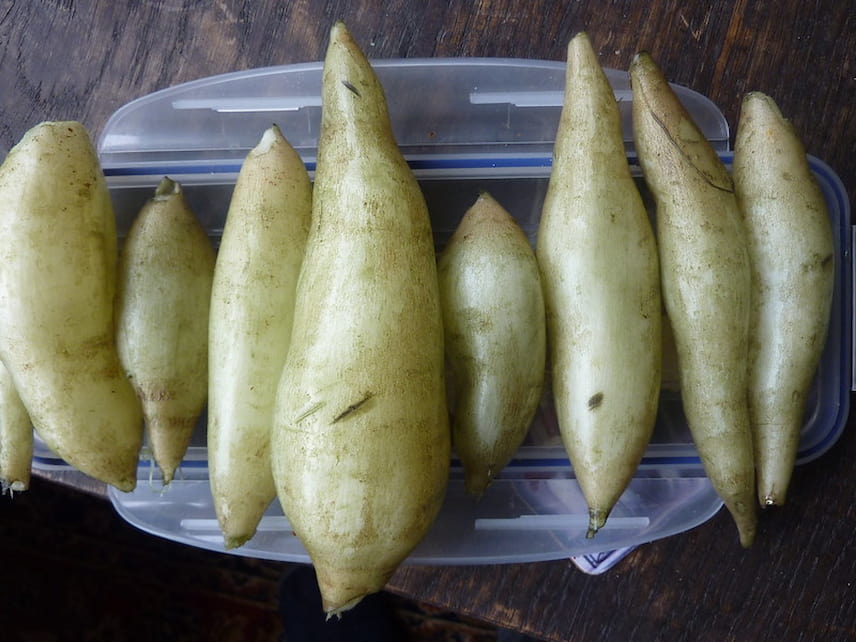
earth pear or yacon is native to South America
Plant from mid‑May once all risk of frost has passed, in rich, well‑drained soil. Choose a sunny position. Harvest takes place between October and November.
Discover other Vegetables by variety
View all →Available in 1 sizes
Available in 1 sizes
Available in 1 sizes
Available in 1 sizes
Available in 1 sizes
Available in 1 sizes
Available in 1 sizes
Available in 1 sizes
Available in 1 sizes
Available in 1 sizes
Chinese yam with giant tubercles
Above ground, Chinese yam (Dioscorea batatas) is recognised by its heart-shaped leaves and long lianas that can climb up to 3 metres high along a trellis or tree trunk. Below ground, Chinese yam produces huge tubercles with pale yellow flesh that feature in Asian cuisine. Weighing about 1 kg in our latitudes, tubercles are eaten raw or cooked, much like potatoes.
In vegetable plot, Chinese yam is a perennial young plant planted in open ground in May. Chinese yam requires deep, very fertile soil, a sturdy support and a sunny, sheltered site. As a tropical young plant, Chinese yam likes heat and humidity. A good mulch will be beneficial. Harvest of tubercles takes place from November to March.
Read also
7 uncommon root vegetablesGombo Okra, a vegetable to grow in the south
Gombo Okra (Abelmoschus esculentus) is a tropical plant of family Malvaceae. And tropical means heat, so it is confined to the southernmost regions such as the Mediterranean basin. This plant reaching 2.5 m produces fruits eaten in Africa as vegetable or condiment. These vegetables, presented as long angular pods harvested green, are eaten in stews, in soups and used in mafé.
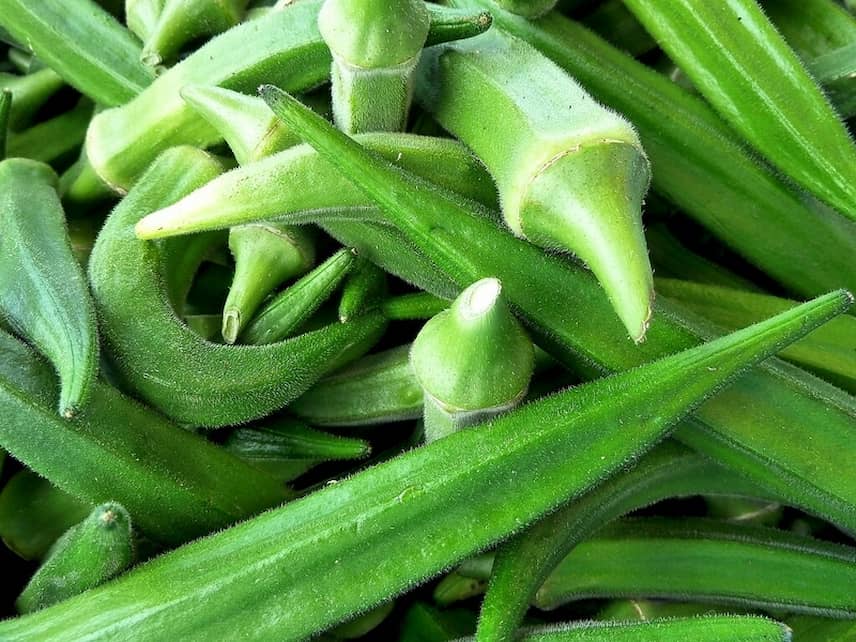
Cultivation of Gombo Okra should be confined to southern regions
Frost-tender and requiring heat, okra should be planted only in regions with mild climates or grown under glass elsewhere. Sowing is done in early spring under cover at temperatures between 21 and 34 °C. Planting takes place in May–June in fertile, well-drained soil and harvest is between July and October.
Peruvian maca, tubercle of high Andean plateaus
Peruvian maca (Lepidium meyenii) belongs to family Brassicaceae. It is a plant that grows at very high altitudes on Andean plateaus and under difficult climate conditions. Maca, also called Peruvian ginseng, forms a rounded root with a taproot, rich in vitamins and minerals. Its texture is similar to potato. Maca can be eaten raw, cooked or dried as it has medicinal properties.
In the vegetable patch, Maca is undemanding: it tolerates both cold and heat. It is sown from February to April and harvested from late autumn to early spring.
Cheese-plant® with surprising Camembert flavour
This plante-fromage® (Paederia lanuginosa) of family Rubiaceae, like coffee plant, smells strongly of Camembert. Discovered in 2015, this plant, native to Asia, is widely used in Vietnamese cuisine. Tropical climbing or creeping plant, it produces green and purple leaves that are harvested as required. Frost-tender down to -8°C, it can be grown in pots and kept warm over winter. It needs a sunny position and humus-bearing, fresh and well-drained soil.
Sowing is done in spring in a warm place. Regular pruning is necessary.
Hélianthi, tubercle close to Jerusalem artichoke
The Hélianthi (Helianthus strumosus) deserves a place in a vegetable garden firstly for its tuberous rootstocks, similar to Jerusalem artichoke and with a flavour between salsify and artichoke, but also for its yellow flowers resembling those of sunflower. Its elongated pale-beige tubercles are cooked as gratins, purees or pan-fried.
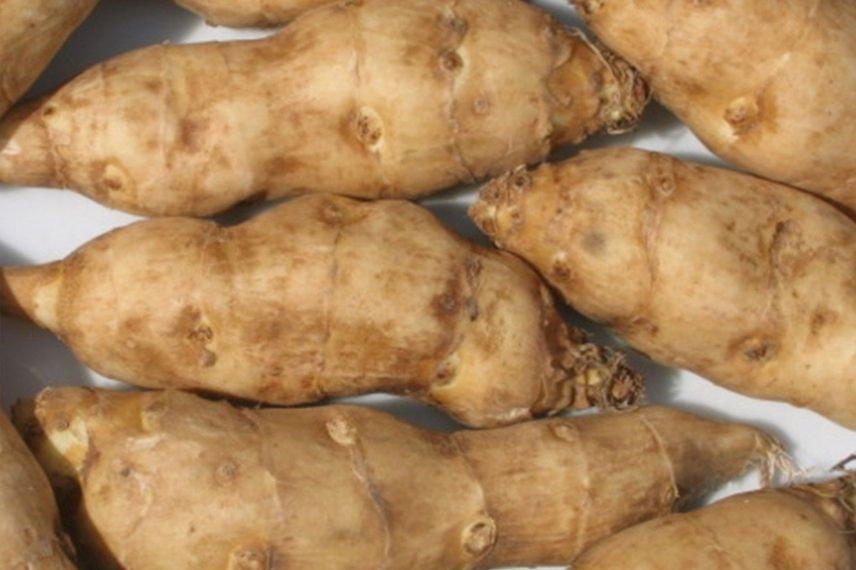
Tubercles of Hélianthi are reminiscent of artichoke and salsify flavours
Reaching 2 m, Hélianthi likes sun and can provide shade in vegetable garden. Like Jerusalem artichoke, it can become invasive, so it needs to be kept contained.
Tubercles of Hélianthi are planted between March and April in soil enriched with compost, loose and well-drained. Harvest takes place between November and March.
Tuberous nasturtium with edible roots
Tuberous nasturtium Tuberous nasturtium (Tropaeolum tuberosum) is known for its edible orange flowers, but did you know it is also a vegetable originally cultivated in the Andes? Its fleshy roots, with a delicate flavour, are also edible, as are its leaves. A young plant can produce up to 700 g of tubercules formed in strings and pear-shaped, which are cooked like potatoes. Leaves and flowers can be eaten in salads.
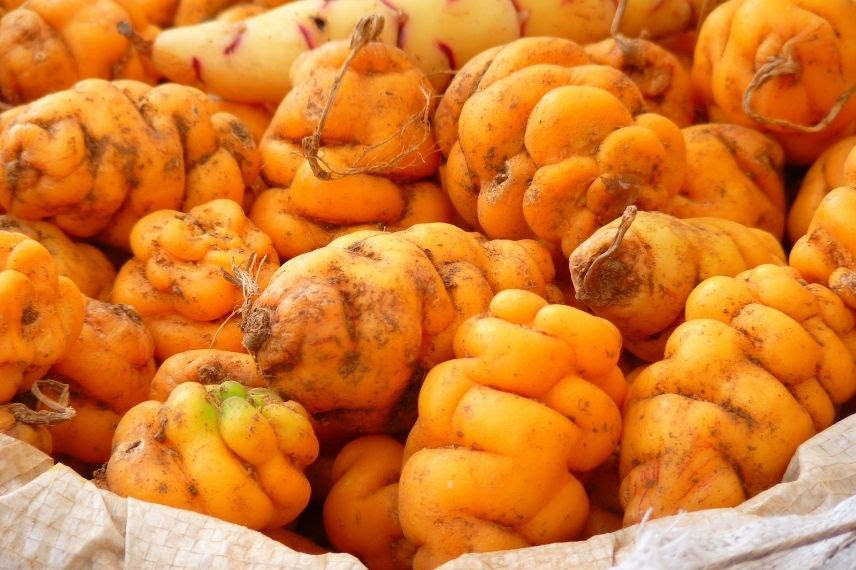
Tuberous nasturtium roots have a delicate flavour
Not very hardy, this climbing plant prefers a sunny position and rich, light, fresh soil. Tubercules are planted in spring, after frosts. Provide a trellis for it to climb. Flowering occurs in late summer and tubercules are harvested after the first frosts.
Skirret with a flavour similar to parsnip
Sometimes called Chirouis, skirret (Sium sisarum) was eaten in the Middle Ages at kings’ tables. It is grown for its roots about 20 cm long and thin, whose white flesh has a flavour quite close to parsnips. These roots are cooked in water or steamed, but also oven-baked as a gratin or pan-fried.
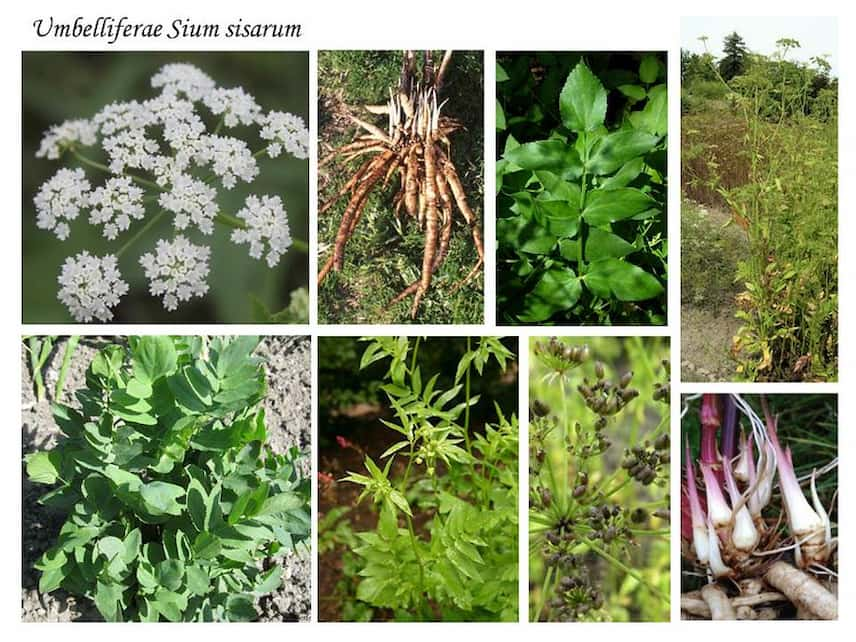
Skirret se cultive pour les longues racines effilées
Skirret, member of family Apiaceae, needs rich, fresh soil, a sunny position and regular waterings. Hardy, it withstands cold, which actually gives the roots a sweeter flavour. Planting takes place in March–April, harvest from November to February.
Jicama or yam bean
Native to Central America, Jicama (Pachyrhizus erosus), also called yam bean, belongs to family Fabaceae. It produces top-shaped tubercles with juicy, sweet flesh with chestnut flavour. It is eaten raw or cooked like a potato.
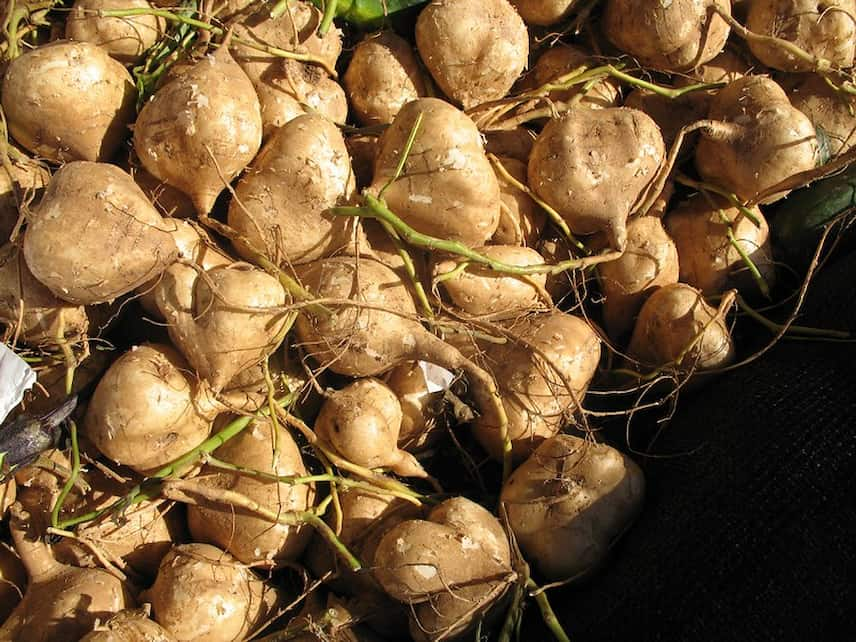
Jicama is native to Central America
Jicama prefers rich, fresh, well-drained, deep soils. It needs a sunny position.
Seeds are sown in March or April in warmth, then seedlings are transplanted into open ground in mid-May. Harvest takes place in September.
- Subscribe!
- Contents
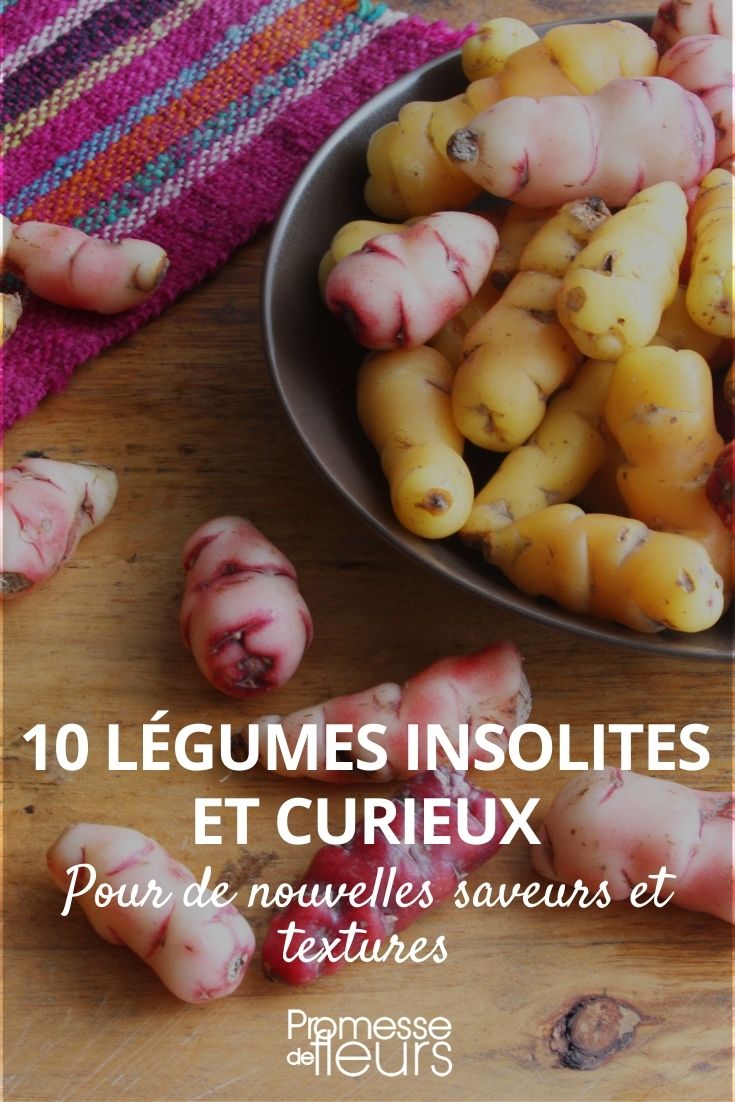































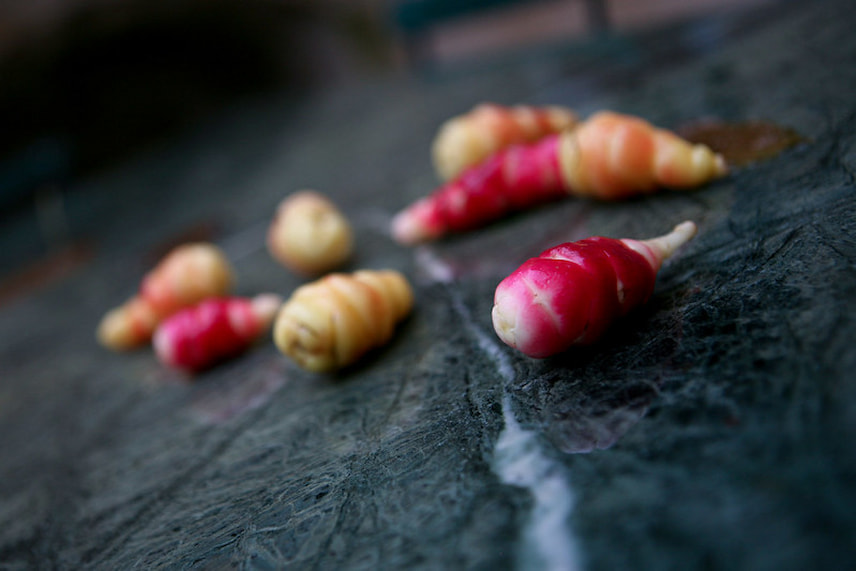
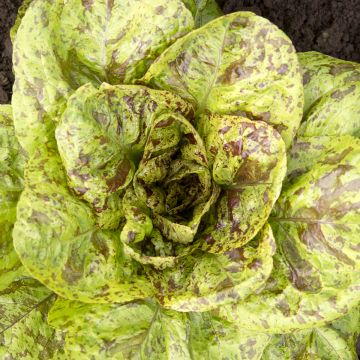

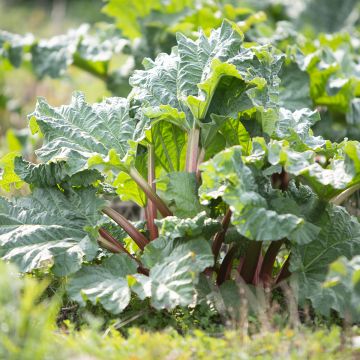
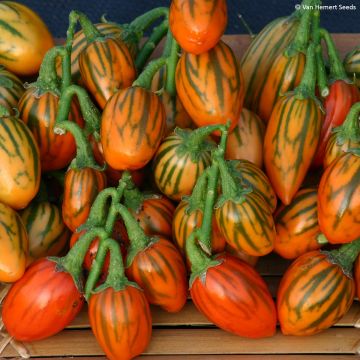
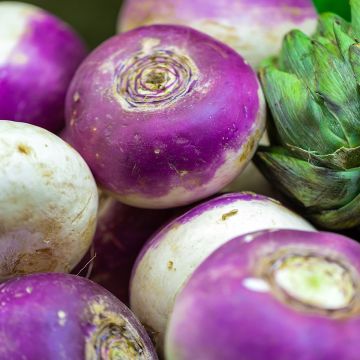
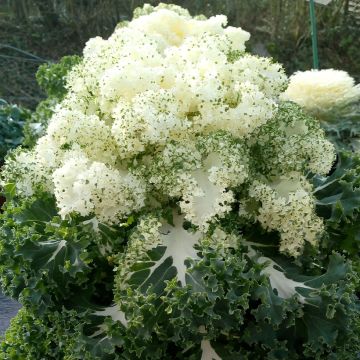
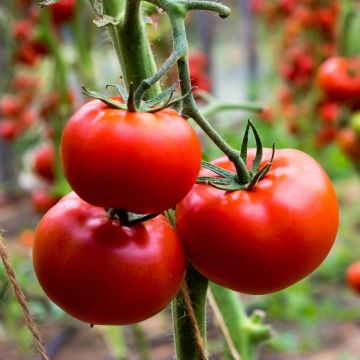
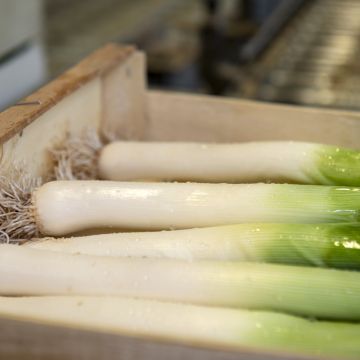
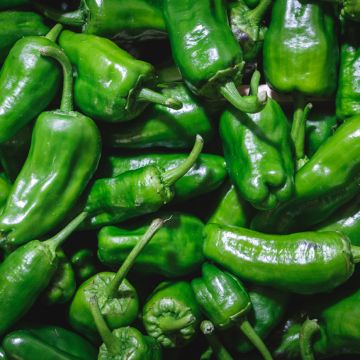
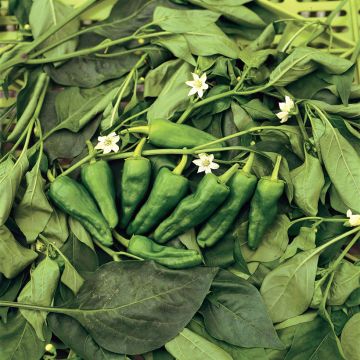
Comments